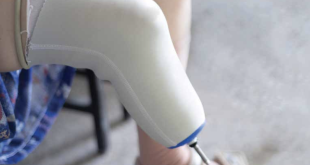In recent years, diabetes has become an increasingly common health concern in Nepal, affecting people from all walks of life. With lifestyle changes, urbanization, and dietary shifts, both Type 1 and Type 2 diabetes cases are on the rise. As we continue to face these growing challenges, the need for advanced and effective diabetes management solutions has never been greater.
One such revolutionary tool now gaining attention in Nepal is the insulin pump- a compact, wearable device that delivers insulin continuously and more precisely than traditional injections.
What is an Insulin Pump?
An insulin pump is a small electronic device that mimics how a healthy pancreas delivers insulin to the body. It provides a steady, controlled release of insulin 24/7 (called the basal dose), and additional doses (boluses) can be given at mealtimes or to correct high blood sugar. The device is usually attached to the body through a tiny tube inserted under the skin, and can be worn discreetly on a belt, in a pocket, or under clothing.
Benefits of Insulin Pumps
Better Blood Sugar Control
With customizable insulin delivery, pumps can significantly reduce blood sugar fluctuations. For Nepali patients who struggle with maintaining consistent glucose levels due to irregular diets or fasting practices, pumps offer much-needed stability.
Improved Quality of Life
Fewer injections mean less pain and more freedom. Patients can live more freely, travel, eat out, and participate in social events without the constant burden of planning around insulin shots.
Empowering Young Diabetics
For children and teenagers with Type 1 diabetes, insulin pumps can be life-changing. They allow better glucose control without interfering with school life, sports, or play, offering peace of mind for both children and their families.
Supporting Active Lifestyles
Whether hiking in the Himalayas, working long hours in the city, or celebrating religious festivals, our insulin pump users can adjust insulin easily on the go to fit their changing needs and activities.
Reducing the Risk of Long-Term Complications
Better glucose control means a lower risk for multiple organs like kidney disease, vision loss, nerve damage, and cardiovascular problems — which are expensive and difficult to manage in Nepal’s healthcare system.
User-Friendly Technology
Today’s insulin pumps are designed with smart features such as alarms, Bluetooth connectivity, and integration with continuous glucose monitoring (CGM), making them easier than ever to use, even for non-tech-savvy individuals.
Breaking Barriers in Nepal
While insulin pump therapy is widely used in Western countries, it is still relatively new in Nepal. The main barriers have been awareness, accessibility, and cost. However, local healthcare providers, diabetes associations, and medical importers are now working together to bring insulin pump technology to more patients across the country. Government and private healthcare sectors are also exploring ways to make these devices more affordable, especially for children and youth living with Type 1 diabetes.
A Step towards Modern Diabetes Management
Introducing insulin pump therapy in Nepal represents a major step forward in modernizing diabetes care. It reflects a shift from reactive treatment to proactive, patient-centered management, giving people with diabetes more control, more confidence, and a better quality of life.
As awareness grows and technology becomes more accessible, insulin pumps could soon become a vital tool in Nepal’s fight against diabetes.
 Medicosnext
Medicosnext




